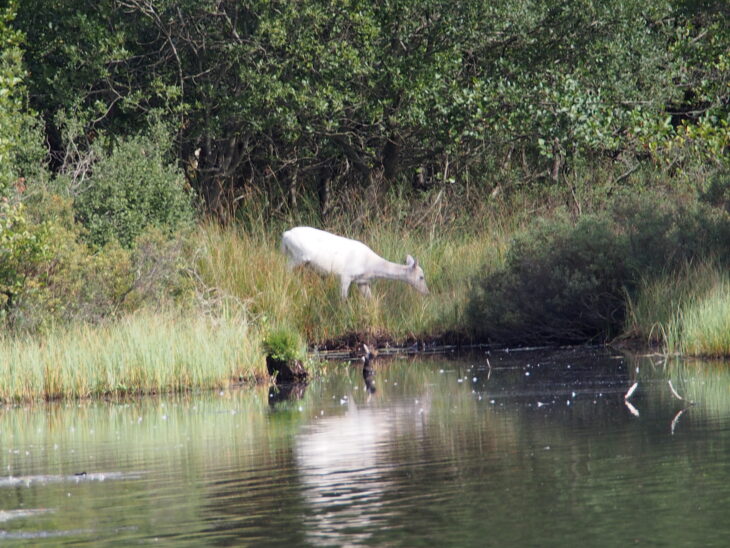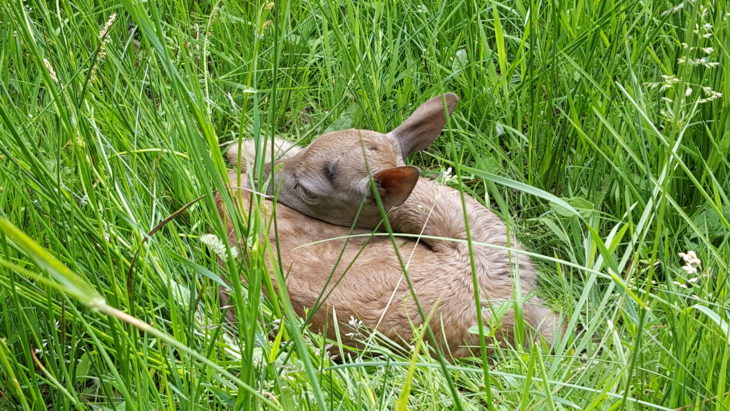Fallow deer
Fallow deer (Dama dama) are a medium sized deer who grow up to 1.8m in length. They were introduced into the UK in the 11th century by the Normans. Originally brought over from the Mediterranean, this elegant species are now wide spread across England, Wales and some parts of Scotland.
Fallow deer are fairly variable in appearance. Whilst most are a pale gingery-brown with white spots, some fallow deer can be very dark with few or no spots, whereas others can be very pale with almost white fur. At Loch of the Lowes we commonly see fallow deer alongside the loch, and we get regular sightings of the pale fallow deer.

As we move into autumn, the fallow deer’s breeding season, known as the rut will begin. The males will make a loud belly belch to proclaim their territory, and fight for the right to breed with the females. Their display will often contain lots of loud grunting noises which can be heard throughout the Scottish woodland. They will also progress into walking beside younger males (bucks) who challenge their mating rights over the herd. They size each other up and if the challenger persists, this often results in dangerous physical contact where the males will lock antlers and push and shove in battles. After a gestation of 234 days, the young are usually born in June-July, giving them time to be weaned before the next rut begins.
Whilst the fawn is very young and unable to keep up with the herd, the mother will leave her tucked away in a corner whilst she goes grazing. It is therefore really important that if you see a baby fallow deer curled up on their own that you don’t touch them and leave them alone. Once the fawn is big enough to keep up with the herd and run from predators, they will join their mother when she grazes throughout the day.

Whilst the males’ antlers are important for rutting season to fight against other males, they do not have these antlers year round. After the rutting season ends, the male will shed his antlers and grow a new pair for the following year. Each year the males’ antlers get bigger and more impressive to the females, growing new branches. Occasionally, males will rub their antlers in the undergrowth to attach extra foliage such as ferns which make the antlers look much larger from a distance.
Amy Bastow
Visitor Centre Assistant
Help protect Scotland’s wildlife
Our work to save Scotland’s wildlife is made possible thanks to the generosity of our members and supporters.
Join today from just £3 a month to help protect the species you love.
Preface
Fallow deer (Dama dama) are a medium sized deer who grow up to 1.8m in length. They were introduced into the UK in the 11th century by the Normans. Originally …
